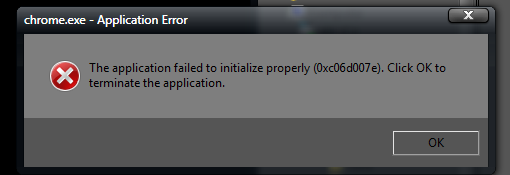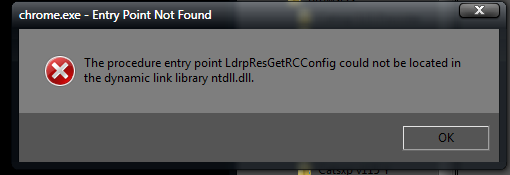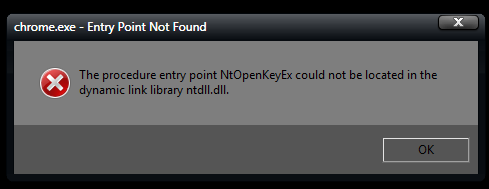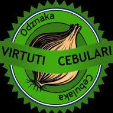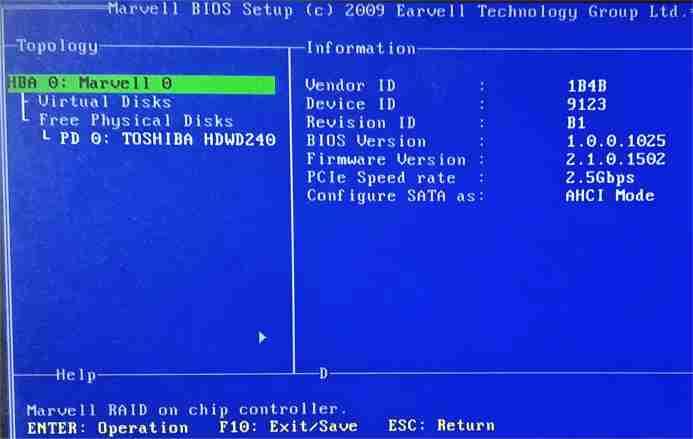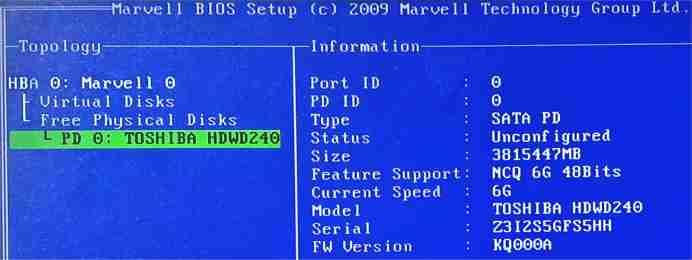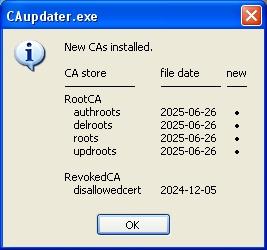All Activity
- Past hour
-

Root Certificates and Revoked Certificates for Windows XP
FranceBB replied to heinoganda's topic in Windows XP
Oh, time to update then. Thanks for the heads up. - Today
-
Alnoor joined the community
-
Child Lover joined the community
-
CureDMan joined the community
-
Then I deleted the Supermium wrapper NdDll, and without it I now see NO missing dependencies, but no start nevertheless.
-
-
My Browser Builds (Part 5)
Goodwin replied to roytam1's topic in Browsers working on Older NT-Family OSes
This is a preparatory stage for the introduction of personal identifiers on the network. Do you remember the Microsoft passport that they wanted to introduce back in 2003? They are psychologically preparing the herd (as they perceive people) to avoid mass discontent. I don't believe in kind-hearted individuals who want to make the internet free for nothing. These individuals are either bought off and remain silent, or they divert the masses towards imaginary threats (such as UFOs), concealing real threats in the noise. For example, such a nuisance suddenly appeared on the last remaining Invidious sites a couple of months ago, and serpent can't pass this test, and I don't want to enable workers or scripts. Previously, these sites could be used without scripts. After introducing such a nuisance, there's no point in maintaining privacy. Alternatively, the owners of the last Invidious sites may have decided to earn extra money by collecting unique browser fingerprints using these protection measures against the dreaded pseudo-AI, which are highly interested in Invidious sites. -
I used kernel33 from extended kernel and advapi32, ole32, shell32, user32 wrappers from Supermium 132. As you can see, for example, ublock works. I didn't need a platform upgrade or an extended kernel installation for this
-
Dave-H started following Opinions on Zone94's WinXP Integral Edition?
-
Linking to pre-activated versions of software is forbidden under forum rules. Links removed.
-
Cool. I had a very old ISO I was using, time to upgrade. Will give it a try as a VM anyway. Do you know if this has the mods to allow use of more than 4GB RAM, if not as RAM, then as RAMdisk, for pagefile?
-
Experimenting with GPT and Hard Disks >2TB under WinXP
Multibooter replied to Multibooter's topic in Windows XP
Experiment 1: Exsys EX-3595 ExpressCard under WinXP I was looking for a SATA ExpressCard (i.e. for a laptop) which would be "compatible with GPT HDDs >2TB under WinXP" Cixert in his posting of 23Jan2025 https://msfn.org/board/topic/181911-read-gpt-hard-disk-on-windows-xp-solved/page/28/#findComment-1277131 had asked chatGPT about SATA cards with WinXP drivers and supporting MBR >2TB. chatGPT indicated that Marvell 88SE9230 and ASMedia ASM1061 have drivers for Windows XP and suggested 4 sources for buying the PCIe cards (i.e. for a desktop). I had bought the Exsys EX-3595 ExpressCard because I have been very satisfied with the Exsys EX-1093 (PCI) and the Exsys EX-11494-2 (PCIe) USB 3.0 cards, both Renesas chips with WinXP drivers, in my desktops. The Exsys EX-3595 ExpressCard contains a slightly earlier Marvell chip 88SE91xx, most likely 88SE9123. The Marvell Storage Utility under WinXP indicates Device ID 9123. The Device Instance ID displayed by WinXP Device Manager is PCI\VEN_1B4B&DEV_9123&SUBSYS_91231B4B&REV_11\5&63CF550&0&0048F0 The EX-3595 ExpressCard comes with a driver CD which contains a working WinXP driver, WinXP Device Manager indicates: Marvell 91xx SATA 3G Controller, Driver Provider: Marvell Inc., Driver Date: 11/6/2009, Driver version 1.0.0.1030, Digital Signer: Microsoft Windows Hardware Compatibility Publisher I have connected the EX-3595 ExpressCard (i.e. for a laptop) in an old desktop with an Asus P5PE-VM motherboard, which has only PCI slots, no PCIe slots, as follows: - in PCI slot: StarTech PCI to PCI Express adapter card - in PCI Express adapter card: the PCIe connector of an SCM ICS-D1 PCIe-to-ExpressCard adapter (has a front panel like a floppy drive) - NOTE: this PCIe-to-ExpressCard adapter supports BOTH USB-based ExpressCards and PCI Express-based ExpressCards (most ExpressCards, like the EX-3595 SATA card, are PCI-Express based) - in the front panel of the PCIe-to-ExpressCard adapter: the Exsys EX-3595 SATA ExpressCard - in the Exsys EX-3595 SATA ExpressCard: an eSATA cable to the eSATA connector of a Sharkoon Combo eSATA/USB 2.0 HDD docking station - in the eSATA Sharkoon docking station: a 4TB Toshiba HDWD240 HDD, GPT with 4 partitions, filled with data beyond the 2.2TB boundary In short: PCI slot => PCI-to-PCIe adapter => PCIe-to-ExpressCard adapter => eSATA docking station => 4TB GPT HDD The BIOS utility of the Asus P5PE-VM motherboard (has an Intel ICH5) does not have a selection to set onboard SATA to AHCI Mode or IDE Mode; instead in Main tab -> IDE Configuration -> Onboard IDE Operate Mode: -> set to Compatible Mode and IDE Port Setting: -> set to Primary P-ATA+S-ATA. The ICH5 was the first Intel chipset with onboard SATA https://en.wikipedia.org/wiki/List_of_Intel_chipsets During POST, after pressing Ctrl-M, the Marvell BIOS Setup menu comes up displaying Configure SATA As: AHCI Mode [The PCIe Speed Rate is displayed as 2.5Gbps, not 5Gbps, probably because of the ExpressCard is ultimately connected to a PCI slot on the motherboard, not to a PCIe slot.] Unfortunately, the Marvell BIOS Setup menu of the EX-3595 [Marvell 88SE9123 chip] canNOT Configure SATA As: IDE Mode. Device Manager of Windows XP displays the 4TB GPT HDD as Unreadable, Capacity: 0MB and the 4TB HDD is not displayed by MS Disk Management. The Marvell BIOS Setup menu indicates that a 4TB HDD (3,815,447MB) is connected. So this older Marvell 88SE9123 chip works with HDDs > 2TB [chatGPT had only found the more recent Marvell 88SE9215 and Marvell 88SE9230 chips], but not under WinXP. When I insert a 320GB HDD with 9 primary GPT partitions into the docking station, with the same hardware arrangement as above, WinXP displays and accesses the HDD OK with the Paragon GPT driver. So the issue with the 4TB HDD under WinXP is caused by the AHCI Mode setting of the EX-3595. The Paragon GPT driver seems to work OK in AHCI Mode with HDDs up to 2TB and seems to require IDE Mode (or no boot) for larger HDDs. "... 9120 and 9123 do have those details while being just AHCI" ... "... The RAID mode can be selected from the same screen, from "Configure SATA as:" field, by playing with Tab/Enter or by reading the bottom suggestions. from: https://winraid.level1techs.com/t/discussion-firmware-update-of-the-marvell-91xx-sata-controller/30492?page=13 [OT: the web page displays OK under WinXP in Mypal68, but not OK in New Moon or Serpent] If I interpret the comments at winraid correctly, maybe SATA cards with the more recent Marvell 88SE9235 chip can be set to IDE Mode in the Marvell BIOS Setup menu, while the older Marvell 88SE9123 chip is only AHCI??? I have not found an ExpressCard (i.e. for a laptop) with the more recent Marvell 88SE9235 chip. Flashing SATA cards to IDE Mode, if possible, is perhaps a way to make SATA cards, which do not have a physical switch for AHCI Boot/No Boot/IDE Boot, compatible with GPT HDDs >2TB under WinXP. Maybe somebody else can experiment with flashing SATA cards to IDE mode. It looks like laptops cannot access, under WinXP, files on a 4TB HDD. In other words: files which you wish to access on a laptop under WinXP have to be an a 2TB or less HDD, NOT on e.g. a 4TB HDD. This limitation reduces substantially, at least for me, the usefulness of HDDs >2TB. I will return the EX-3595 ExpressCard in the next 2 days. QUESTION: Any ideas about how to set the EX-3595 ExpressCard to IDE Mode? -
The focus of this topic is on experiences, experiments, issues and solutions under Windows XP; related postings about other old operating systems are also welcome. Postings here may also be about specific hardware, with the objective to identify hardware "compatible with GPT HDDs >2TB under WinXP". Please share your experiences!
-
I use this all the time, it's my go to whenever I want to install XP. They even include our updated ACPI/USB3/AHCI/NVMe drivers as optional patches.
-
Replica Rolex changed their profile photo
-
My Browser Builds (Part 5)
Ben Markson replied to roytam1's topic in Browsers working on Older NT-Family OSes
I have a lot more run-ins with Cloudflare than I do Anubis. Both of them can get stuck in an infinite validation loop. Cloudflare can get insanely aggressive, it will quite happily lock your browser into an irretrievable Loop of Death (who would write code like that?). At least Anubis can easily be stopped. I think the thing I object to the most is that they focus on the way a browser looks rather than what it is actually doing. In civil society this is characterised as profiling rather than being intelligence led. All that will happen is that the bots will better disguise themselves and their behaviour will go unchecked. Ben. -
Asp started following Opinions on Zone94's WinXP Integral Edition?
-
"Windows XP Professional SP3 x86 - Integral Edition 2025.5.5" I could not find a topic about this here, let me know if I missed it. Wondering if any have tried it and have an assessment to share?
-
Can you fix this behavior with the right click in Windows 11? It doesn't happen with the classic start menu (but I must be one of the few who prefers the new one XD) the video of the problem + the settings applied: https://streamable.com/60xf6e Thanks.
-
Dracon joined the community
-
if /PAE is on windows dont load NTOSKRNL.exe windows then load NTKRNLPA.exe it often sounds like that the things are like very simple, like it can be done within 5 mins but rather often these projects are big. you cant just do like many of them i would be happy if that would be the case, but rather teamwork is required, one person doing all of these isnt possible rather if someone would try he would just have to much to do (and in the end probably no problem was solved) - thats why i didnt want to join a other project then xp for example - we have still a lot to do with xp this one is also not a small one if you dig into the paging system - there are books that describe that mechanism´s and norms (assembly books for example) + getting these into the ntoskrnl before boot the bios also prints out "i have 8 gb ram" the message in the first post also just shows windows saying it have that, but there is no confirmation that it actually is doing that to look for what the patch actually changed there are file compare app´s this is a free one : https://www.file-upload.net/download-15511527/fc.exe.html a small patch theoretical could do it just like that, that´s in range of possibilities with the file compare tool you can look the disassembled code, so you can see with what the patch(es) interferes so thank you to all that help with us, a testing maybe loading multiple apps/executables would be a good idea these running app´s actually should use up more then 4 GB in total, maybe some chrome instances that would tell us more about the functionality of this patch a bit more just 1 app/executable cant pass the 32 bit limit without a selector/segment selector, except maybe there would be the switch option (like the ramdisc is doing) however what the patch maybe could do is that different apps can be mapped to higher ram then 4 GB that only require the right pages that represent the higher area over 4 GB into different executables/app´s to say is that like 99,99 % of app´s/executables dont use selectors, and i never have seen them (also in win7-10) for the purpose to pass more then 4 GB ram the switch solution (like a ramdisc do) works a bit different you can store like 16 gb of ram, thats not the problem - but each time you want to access a certain ram you have to remap that data to an certain virtual offset (thats what a ramdisc is doing, that is very fast but its a piece wise solution) - that solution dont use a selector but - i dont think windows can do that yet but again over multiple executables there we dont have that problem - 4 GB for each running application sounds not bad
-

Root Certificates and Revoked Certificates for Windows XP
egrabrych replied to heinoganda's topic in Windows XP
The contents of the updroots.sst file have been changed; the contents of the other * .sst files are unchanged. -

My Browser Builds (Part 5)
nicolaasjan replied to roytam1's topic in Browsers working on Older NT-Family OSes
Yes. -
Yea, I use SP2: ntkrnl2.exe SP2 5.1.2600.2180 (patched by WinXPPAE 3.5 on SP2 OS) + hal2.dll SP3 5.1.2600.5512 (patched by WinXPPAE 3.5 on SP3 OS because the patcher cannot patches the hal.dll SP2 version) ntkrnl3.exe SP3 5.1.2600.5512 + hal3.dll SP3 5.1.2600.5512 - both patched by WinXPPAE 3.5 on SP3 OS ntkl64g.exe SP3 5.1.2600.6368 + hal64g.dll SP3 5.1.2600.5512 - files from @Dave-H 64 GB of RAM patch.zip I test (for a short time) my XP SP2 on other machines and probably no lag issue but this is fresh installed OS - no any drivers, apps. maybe lag issue is only on my SandyBridge machine recently I changed 2x4GB RAM - maybe they cause the problem? my OS has all drivers and many applications installed - maybe some application or driver works badly with a RAM patcher? I have to test the patch for a long time on other computers + all drivers installed. boot.ini [boot loader] timeout=30 default=multi(0)disk(0)rdisk(0)partition(2)\WINDOWS [operating systems] multi(0)disk(0)rdisk(0)partition(2)\WINDOWS="RAM v3.5" /noexecute=optin /fastdetect /kernel=ntkrnl2.exe /hal=hal2.dll multi(0)disk(0)rdisk(0)partition(2)\WINDOWS="WinXP" /noexecute=optin /fastdetect This is my table when DEP/PAE works on WinXP SP2 depending on the setting of the noexecute option in boot.ini So, I do not have to use boot.ini switch /PAE because noexecute=optin is enough.
-

Win95 vs 98/ME(patched ME) Dos-Prompt interrupt access
awkduck replied to awkduck's topic in Windows 9x/ME
@jumper Yes, that sounds right. Have you used a Dos Ethernet packet driver, before? I could expand on this a bit. When you install a packet driver, it creates a software interrupt vector. You specify that vector to the Dos application you'd like to use; either in a config file or as an command line argument. This all in real Dos. So with Win95, the Dos VM can reach that vector, having been setup at boot time (the packet driver installed at boot via Autoexec.bat). With Win98 (and above) this does not seem to be the case. I have tested it with different packet drivers and different machines (also Qemu). Another example would be trying to use Trumpet Winsock 3.0d with Win98 (or above). It seems Trumpet cannot access the Dos Ethernet packed driver, either. Trumpet Winsock 3.0d is not a Dos application. Trumpet is designed to provide a Winsock (16/32bit) to Windows, for Windows applications. I've noticed there is a Trumpet Winsock v5 (provides IPv6) that is specified for Windows 95/98/ME. It uses an Installed Windows Ethernet driver. So, this is a gentle suggestion that "maybe" Win98 (and newer) cannot use Dos packet drivers. However, this isn't truly confirmed; as Trumpet v5 came out later, and Windows Ethernet device drivers likely seemed like the "more" logical target (for a 3rd party Winsock). Note, in case it isn't already clear, I am successfully using packet driver dependent Dos applications, from Win95 DosPrompts(VMs). I can also use Pktmux, and share that packet driver with multiple dos applications simultaneously (VMs/DosBoxes/DosPrompts); as can also be done with Win3x(enhanced) and Desqview. Unless there is a option to allow the functionality, it seems Win98, and newer, are unable to do this. EDIT:I am aware of tools to emulate a packet driver, for Dosboxes/DosPrompts. So, if you have an installed Windows device driver (for your Ethernet device) you can run multiple Dos applications, with packed driver emulation over the stock Windows Winsock. I'm just more curious about the change between 95 and 98, concerning real dos packet drivers. -
I notice a few things: It is my understanding that Windows XP with Service Pack 2 is used here (which presumably also using Service Pack 2 HAL and kernel). The patch author appears to have tested against Windows XP Professional with Service Pack 3 but not Windows XP Professional with Service Pack 2. reboot12 has not indicated which kernel and HAL file versions (both version number and variant/flavor of HAL or kernel) he has patched and tested. It would be also good to specific the relevant boot.ini configuration used. The problems experienced might not be due to defective patch but rather other bugs or defects in the patched files or elsewhere (such as other system files or other software). The videos do not demonstrate a problem with disk operations but rather performance of select operations.
-
It is my understanding (I do not renumber why so; it may be hearsay) that the latest patcher, v3.5, includes a process RAM allocation limit; whereas, older versions (so sure how much older) did not. I am unsure of the reasoning why (but do have best guess) and I do not remember if such is consistent with the Windows XP (any flavor) with Service Pack 1 behavior. It would have been nice if the The daniel_k HAL/NTKernelv v3.5 patcher would have come with instructions and a changelog.
-
My Browser Builds (Part 5)
Mathwiz replied to roytam1's topic in Browsers working on Older NT-Family OSes
So it is a bandwidth issue. Fair enough. I had no idea that AI crawling had become such a burden for Web servers. Still having a hard time grokking why the AI crawlers don't respect robots.txt though. AIUI, their purpose is just to gather content to train AI engines; surely there's plenty of content even without violating such a longstanding norm! In any case, I question Anubis's assertion that "The idea is that at individual scales the additional load is ignorable." It took R3dfox v.139 several seconds to complete the challenge, to say nothing of UXP browsers. But I suppose there was a silver lining: MC probably had to ensure UXP could pass the challenge before using it to protect his own repo! It would be quite embarrassing if RPO couldn't be accessed by Pale Moon.... -
Win95 vs 98/ME(patched ME) Dos-Prompt interrupt access
jumper replied to awkduck's topic in Windows 9x/ME
Under Windows, DOS apps run in a virtual machine that has a command console user interface. That VM can make software interrupt calls into the BIOS. DOS drivers usually install as Int21h sub-functions. -
My Browser Builds (Part 5)
VistaLover replied to roytam1's topic in Browsers working on Older NT-Family OSes
RPO (repo.palemoon.org) is a server owned and paid-for by Moonchild himself; Gitea is just the version control software deployed on that private server to manage source development for UXP, Pale Moon and related projects; it's what is called a "private (self-hosted) Gitea instance" ; on the Anubis test page itself, one can read: ... so I believe MC is mainly concerned with excessive bandwidth consumption; please also note that he had already implemented geolocation-based ACLs (access-control-lists) to counter automated DDoS attacks and, as a consequence, in Hong Kong (where our own roytam1 lives ) RPO is blocked ...

.thumb.jpg.3ee84bfccf0d6860e8194943bbf0555c.jpg)

